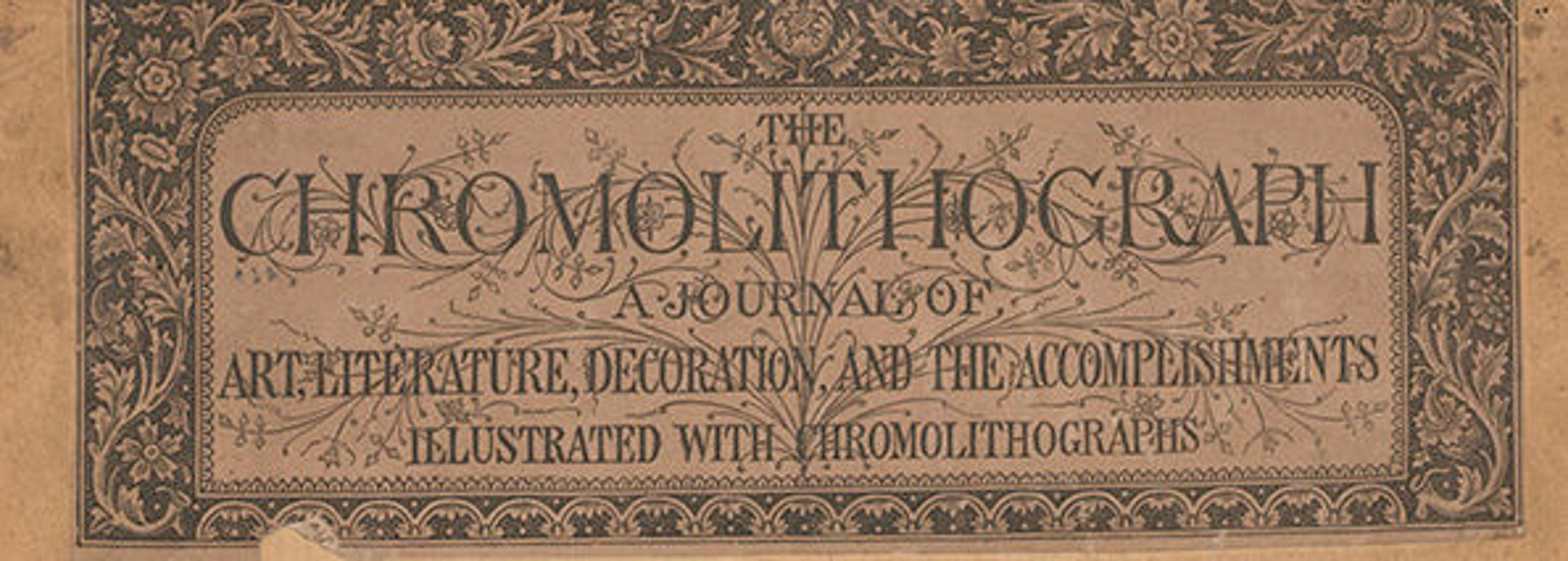
Nameplate, The Chromolithograph 1, no. 1 (November 23, 1867)
«The Chromolithograph was a British publication issued weekly from November 1867 through March 1869. Intended as a journal of "art, literature, decoration and the accomplishments," this publication used chromolithography, a then relatively novel printing technique, to illustrate the various themes discussed in its articles. The first twelve issues of The Chromolithograph—spanning November 23, 1867, through February 8, 1868—have recently been digitized by the Watson Library, and a browse through this content will provide one with a fascinating view of the artistic, cultural, literary, and social world of Victorian England just past mid-century.»
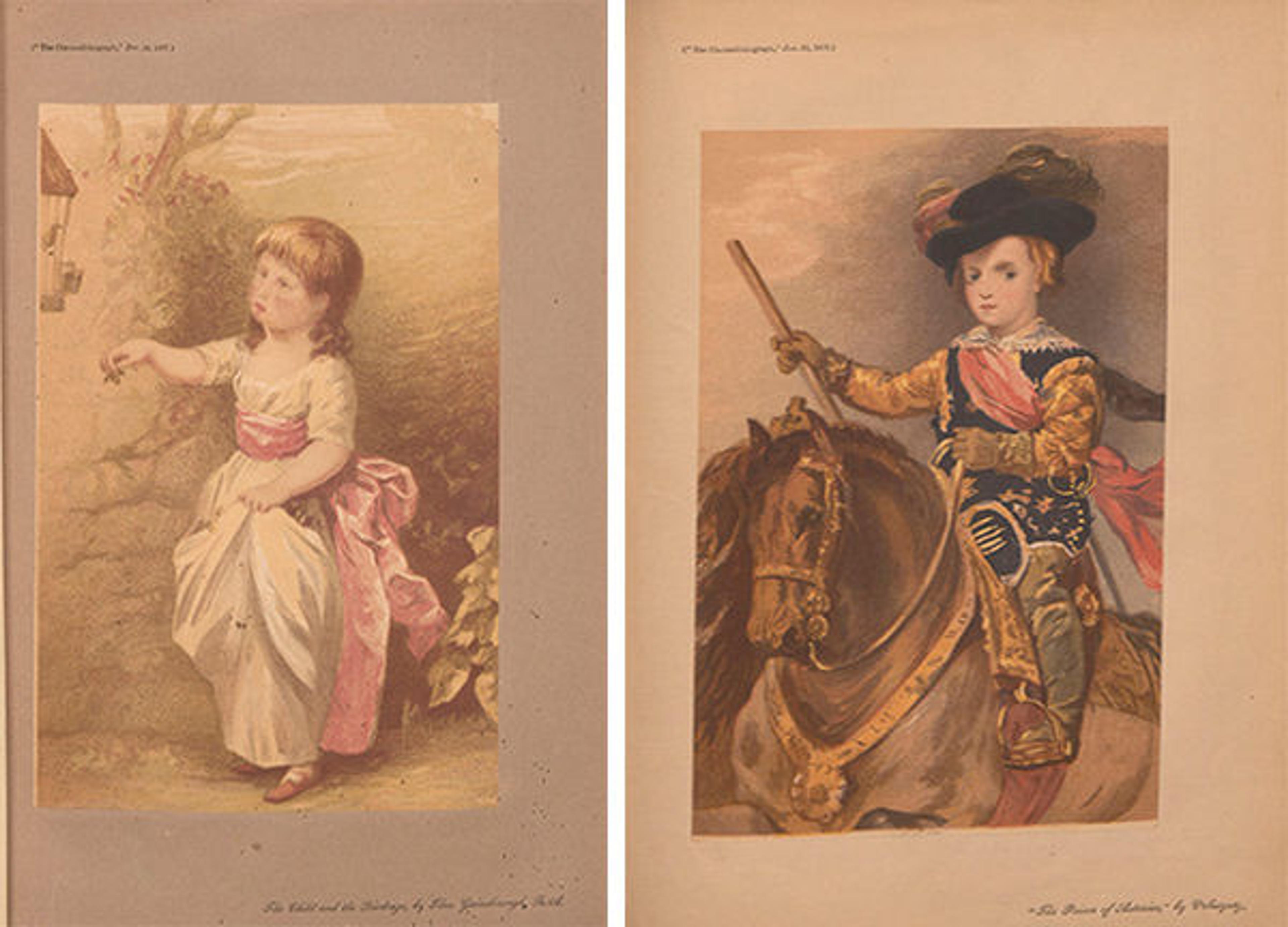
Left: Chromolithograph plate of Gainsborough's The Child and the Birdcage, The Chromolithograph 1, no. 6 (December 28, 1867). Right: Chromolithograph plate of Velázquez's The Prince of Asturias, The Chromolithograph 1, no. 9 (January 18, 1868)
The articles and notices found in the issues of The Chromolithograph are broad and eclectic in their scope. There are a significant number of entries covering the fine arts as well as several artists' biographies, many of which are frequently enriched by a chromolithographic reproduction of the art work under discussion. For instance, the images above accompany articles on Gainsborough and Velázquez.
The journal also includes coverage of the decorative arts, featuring such topics as Neapolitan majolica and objects produced by the Parisian firm of Christofle et Compagnie. Also included is a regular section entitled "Frozen Musical Notes," which covers architecture in various cities. The section's title is explained in the very first entry as being derived from a quote by Goethe who is said to have compared architecture to "Frozen Music." Some of the more engaging items in this section include the denial of the reported retirement of the French urban planner Baron Georges Eugène Haussmann from the prefecture of the Seine, and a report that the wells in the more populous parts of Paris had become contaminated by infiltrations from the Montmartre and Père Lachaise cemeteries.
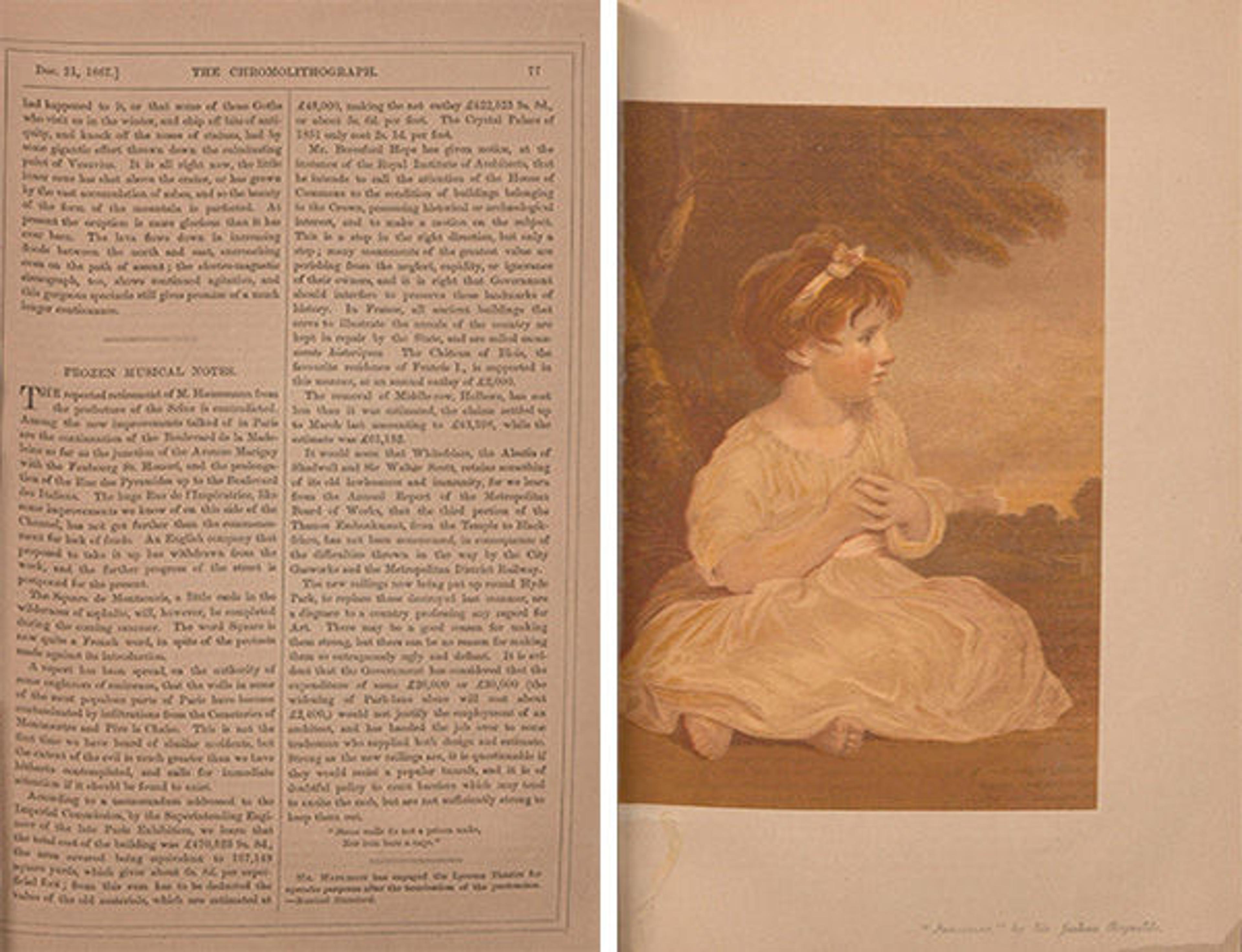
Left: "Frozen Musical Notes," The Chromolithograph 1, no. 5 (December 21, 1867): 77. Right: Chromolithograph plate of Joshua Reynolds' The Age of Innocence, The Chromolithograph 1, no. 2 (November 30, 1867)
The Chromolithograph also includes news about recent art acquisitions by museums, galleries, and individuals. For instance, mention is made of several paintings acquired by the National Gallery, including one by Andrea Pisano entitled St. Anthony and St. George in Conversation, one by Domenico Veneziano featuring two heads of saints together with a Madonna and Child, and one by Rembrandt which is described as representing ". . . a full-faced portrait of an aged lady dressed in the conventional white cap and ruffles." [1] The bequest of Joshua Reynolds's painting The Age of Innocence by the late Mr. Vernon to the South Kensington Museum is discussed in the November 30, 1867, issue, as is the price of 1,450 guineas at which Mr. Vernon acquired the work.
Announcements and reviews of current exhibitions abound throughout the issues of The Chromolithograph. One of the more important of these exhibitions was the International Exposition of 1867 in Paris, which had only just recently ended. In fact, the very first article published in The Chromolithograph is a sentimental reflection on the last few days of the Paris exposition and its dismantling.
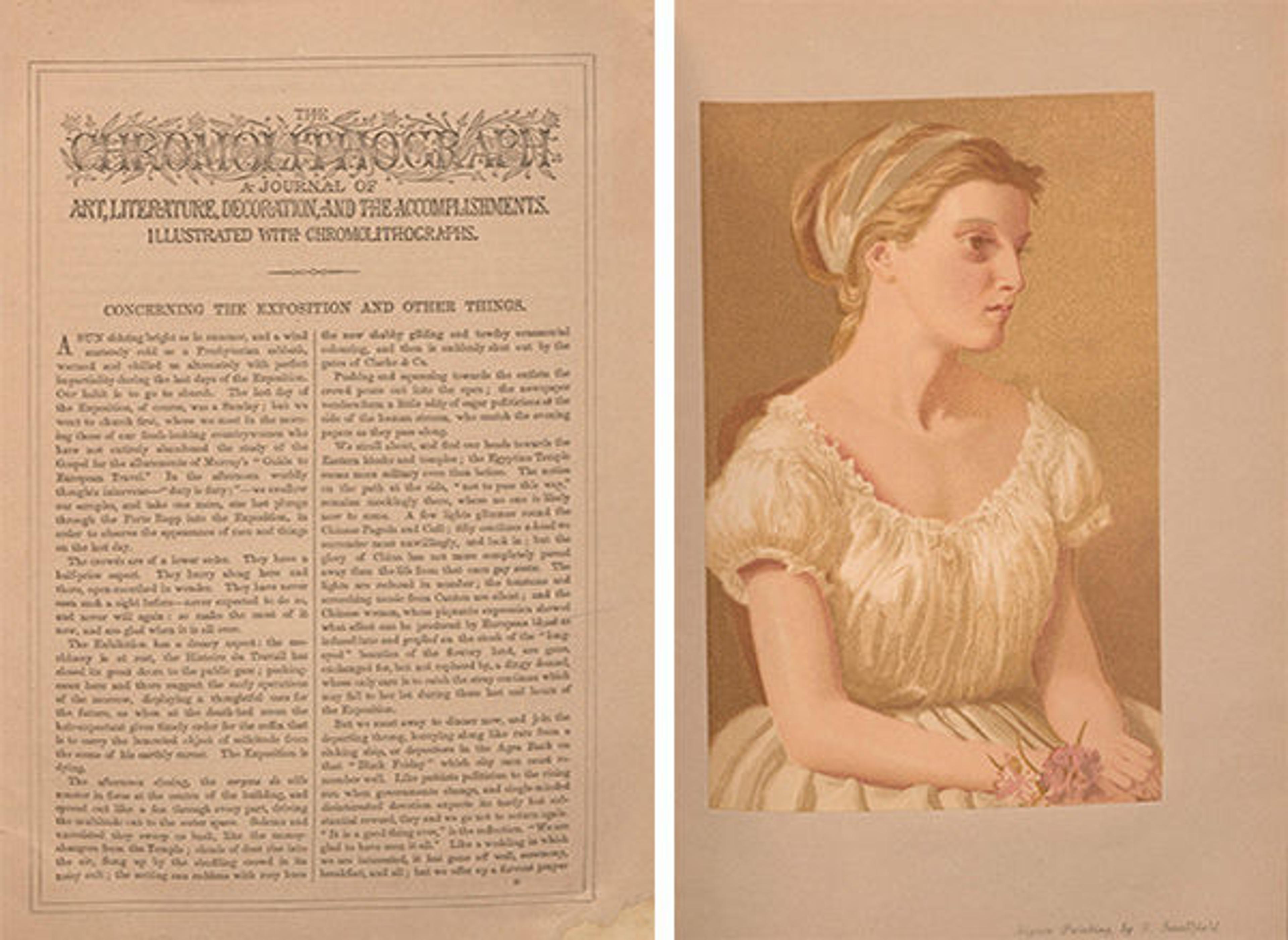
Left: "Concerning the Exposition and Other Things," The Chromolithograph 1, no. 1 (November 23, 1867): 1. Right: Chromolithograph plate of Frederick Smallfield's Girl's Head, The Chromolithograph 1, no. 3 (December 7, 1867)
The Chromolithograph also includes regular entries providing instruction on the art of watercolor and figure painting, as well as various other techniques such as woodcarving and illumination. Written by artists and teachers in the field, most of these entries are accompanied by illustrations. Artist Frederick Smallfield wrote of his illustration in his article on figure painting: "The accompanying Girl's Head I have painted, for your guidance, almost in profile, because that is easier than the full face. You will also be grateful to me for hiding one of her hands with a couple of clove pinks, thus for the present evading some of the difficulties of hand-drawing." [2]
In addition to the journal's main content, what might be of interest to today's readers are the more miscellaneous, and occasionally random, articles and sections of The Chromolithograph, such as the theater and opera reviews, entries on travel, short stories with an art theme, and sporadic political news. In the December 7, 1867, issue, for instance, a small entry relays the "extraordinary incident" that occurred during an election in Manchester, that incident being described as follows: "A woman presented herself at the Chorlton Town Hall, and tendered a vote for Mr. Jacob Bright. An examination of the register showed that her name had really been placed on the list of electors, and her vote was received." [3] The entries on travel tend to focus on art-related and historical sights. A series of these articles document the eruption of Vesuvius and its effect on tourism in and around Naples.
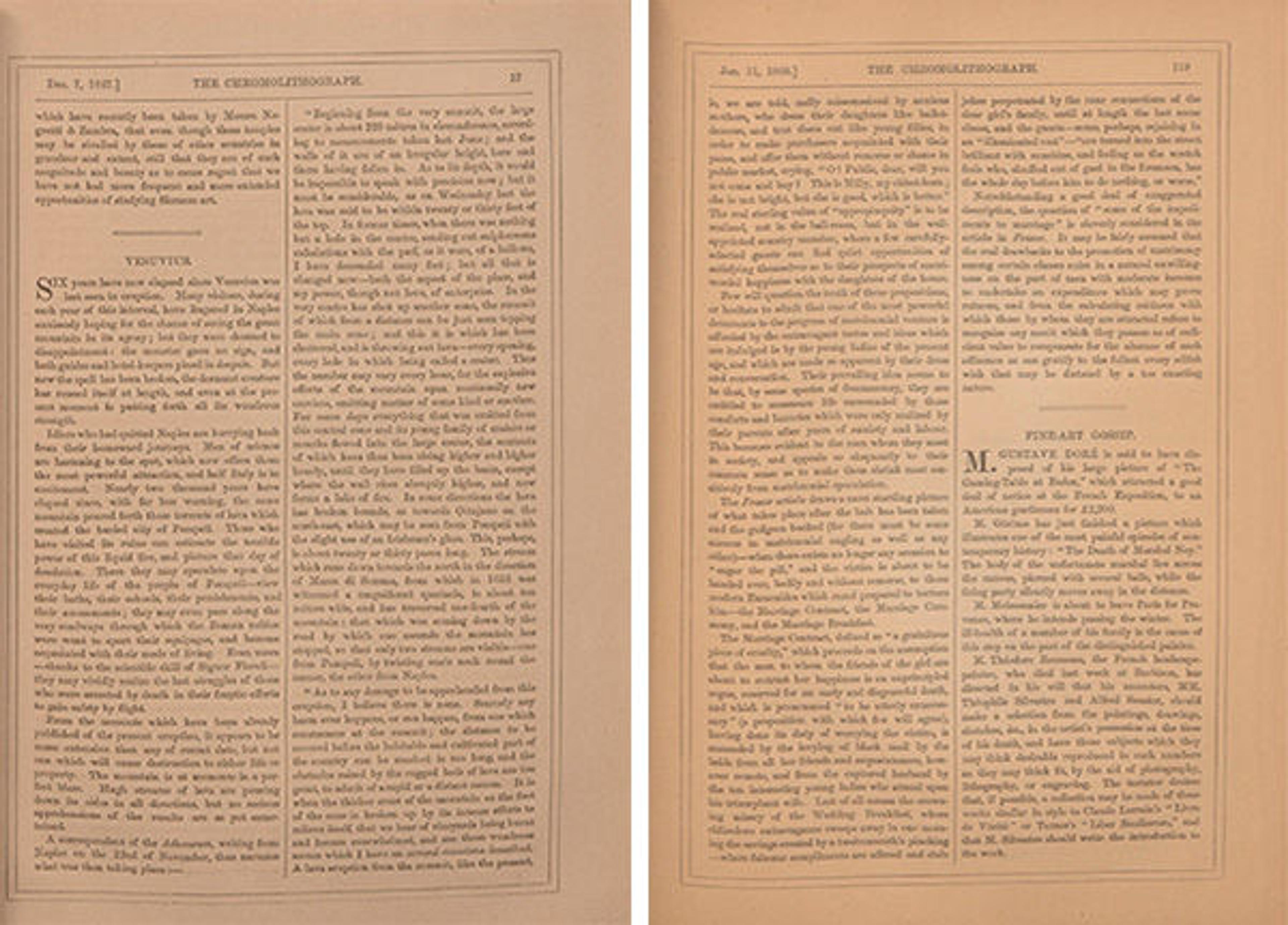
Left: "Vesuvius," The Chromolithograph 1, no. 3 (December 7, 1867): 37. Right: "Fine-Art Gossip," The Chromolithograph 1, no. 8 (January 11, 1868): 119
There is also a section devoted to "Fine Art Gossip," which includes brief updates concerning artists and other individuals involved in the art world, as well as information about sales and acquisitions of artworks. Entries in this section report such items as the candidacy of Charles Garnier, architect of the Paris Opera House, for membership in the Academy of Fine Arts, the completion of Jean-Léon Gérôme's painting The Death of Marshal Ney, and the sale of Gustave Doré's The Gaming-Table at Baden to an American gentleman for £2,200.
Lastly, no post about The Chromolithograph would be complete without mentioning the wonderful advertisements enclosed in its pages. From sales of tonic bitters, breakfast cocoa, and perfumed Valentines, to scientific play sets for children, sewing machines, and mourning clothing, these advertisements provide a unique view into the English commercial and social world of the 1860s.

Left: Front page advertisements, The Chromolithograph 1, no. 12 (February 8, 1868). Right: Last page advertisements, The Chromolithograph 1, no. 3 (December 7, 1867): viii
Moreover, since one of the aims of this publication is to promote the art of chromolithography, it is not surprising to find many advertisements for the sale of chromolithographs, including one, seen in the above right image, for facsimiles of Raphael's cartoons.
A dip into the library's digital copies of The Chromolithograph, whether to read about the possible discovery of a drawing for Titian's St. Peter, Martyr, to scan the list of books produced in chromolithography using color printing, or simply to be intrigued by an advertisement for "self-fitting candles," will provide one with an absorbing and colorful read.
[1] "New Pictures in the National Gallery," The Chromolithograph, Vol. 1, No. 1 (Nov. 23, 1867), 15.
[2] Frederick Smallfield, "Figure-Painting in Water-Colours," The Chromolithograph 1, no. 3 (December 7, 1867): 34.
[3] The Chromolithograph 1, no. 3 (December 7, 1867): 46.